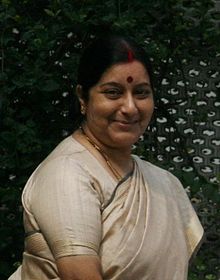
“Give me a one-handed economist,” quipped the American president Harry Truman, many years back. “All my economists say, ‘on the one hand…on the other’.”
The finance minister Arun Jaitley is currently probably going through the one-handed economist phase as well. There has been a huge debate going on, in the media, whether the government should relax the fiscal deficit target of 3.5% of gross domestic product for the next financial year i.e. 2016-2017, when it presents its budget later this month. Fiscal deficit is the difference between what a government earns and what it spends.
Economists, as usual, are divided on it. Some like the idea of government spending more in order to revive the slow economic growth (or so they like to believe). Others have been highlighting the negative consequences of the government spending more.
This has left Jaitley, who has no background in either finance or economics, and was a part-time politician and a full-time layer, until few years back, confused. As he recently said: “I’ve been consulting all shades of opinion. This is the first time I’ve come across people holding sharply divided views. Each one has a strong argument in his favour.”
The Chief Economic Adviser to the finance ministry, Arvind Subramanian, has been in favour of the government spending more. In the Mid-Year Economic Analysis released in December 2015, Subrmanian had suggested that in a scenario of lower than expected economic growth (as measured by the real/nominal GDP growth) “if the government sticks to the path for fiscal consolidation, that would further detract from demand.” Further, “consolidation of the magnitude contemplated by the government… could weaken a softening economy”. Fiscal consolidation is essentially the reduction of fiscal deficit.
The finance minister Arun Jaitley had talked about fiscal consolidation in the two budget speeches he has made till date in July 2014 and February 2015. In the first speech he said that the government is aiming to achieve a fiscal deficit target of 3% of gross domestic product(GDP) in 2016-2017.
In the speech he made in February 2015, he postponed this target by a year and said that the government will achieve a fiscal deficit of 3.5% of GDP in 2016-17; and 3% of GDP in 2017-18. Now there is pressure on the finance minister to abandon the fiscal deficit target of 3.5% of the GDP set for 2016-2017, from one set of economists and the industry.
The trouble is another set of economists does not agree with this. Economist Arvind Panagariya, who happens to be the vice chairman of the NITI Aayog said in January 2016: “I personally don’t think we should be tinkering with the deficit as a percentage of GDP.”
Raghuram Rajan, the governor of the Reserve Bank of India, has also been an advocate of the government sticking to a path of fiscal consolidation. He reiterated the same in a recent speech as well as the monetary policy statement released last week.
One of the interesting points that Rajan made was that India’s overall fiscal deficit position has deteriorated. As he said: “The consolidated fiscal deficit of the state and centre in India is by far the largest among countries we like to compare ourselves with; presently only Brazil, a country in difficulty, rivals us on this measure. According to IMF estimates (which is what the global investor sees), our consolidated fiscal deficit went up from 7 percent in 2014 to 7.2 percent in 2015. So we actually expanded the aggregate deficit in the last calendar year. With UDAY, the scheme to revive state power distribution companies, coming into operation in the next fiscal, it is unlikely that states will be shrinking their deficits, which puts pressure on the centre to adjust more.”
One reason why government’s numbers are different from IMF numbers is because the government of India under-declares its fiscal deficit. How does it do it? The government recognises the disinvestment of shares in public sector units as a revenue rather than as a financing item.
As economist Rajeev Malik of CLSA put it in a recent column in the Mint: “India tends to under-report its fiscal deficit because it counts divestment and other asset sales as revenue rather than a financing item, as is practised by the International Monetary Fund (IMF). Thus, the FY16 budget deficit target—adjusted for divestment—was actually 4.4% of GDP, not 3.9% as officially reported.”
“Rating agencies remain strangely silent on this self-serving approach,” Malik validly points out.
What complicates the situation further is that the government follows the cash accounting system and only acknowledges expenses once payment has been made. This has led to a situation where subsidy payments to Food Corporation of India(FCI) and fertilizer companies remain unpaid. The money has been spent by FCI and the fertilizer companies but remains unpaid by the government, and hence is not acknowledged as an expenditure.
The question is where does FCI get this money from? It borrows from the financial market. Why does the market lend money to FCI? It does that because it knows that it is effectively lending money to the Indian government. Hence, this subsidy expenditure has already been incurred by the government but has not been accounted for.
As economist M Govinda Rao put it in a recent column in The Financial Express: “In fact, the cash accounting system hides the real fiscal deficit which is much higher as substantial subsidy payments to Food Corporation of India and fertiliser companies are yet to be disbursed.”
While Jaitley may keep debating whether or not to abandon the fiscal deficit target that he set previously, he needs to tell us clearly what is India’s real fiscal deficit. If that means that he doesn’t get around to meeting the target.
Getting back to Rajan, the RBI governor also raised the question, whether the extra economic growth that will come in because of the government abandoning its fiscal deficit target and spending more, be worth it.
As Rajan said: “Perhaps Brazil offers a salutary lesson. Only a few years ago, the world was applauding the country’s thriving democracy, its robust economic growth, and the enormous strides it was making in reducing inequality. It grew at 7.6 percent in 2010…Paradoxical as it may seem, Brazil tried to grow too fast. The 7.6 percent growth came on the back of substantial stimulus after the global financial crisis.”
In fact, India tried the same strategy in the aftermath of the financial crisis, with the government coming up with a substantial economic stimulus. While this lifted the economic growth for the next few years, it led to a huge increase in corporate debt and high inflation, the aftermaths of which the country is still facing.
The column originally appeared in the Vivek Kaul Diary on Equitymaster on February 8, 2016



